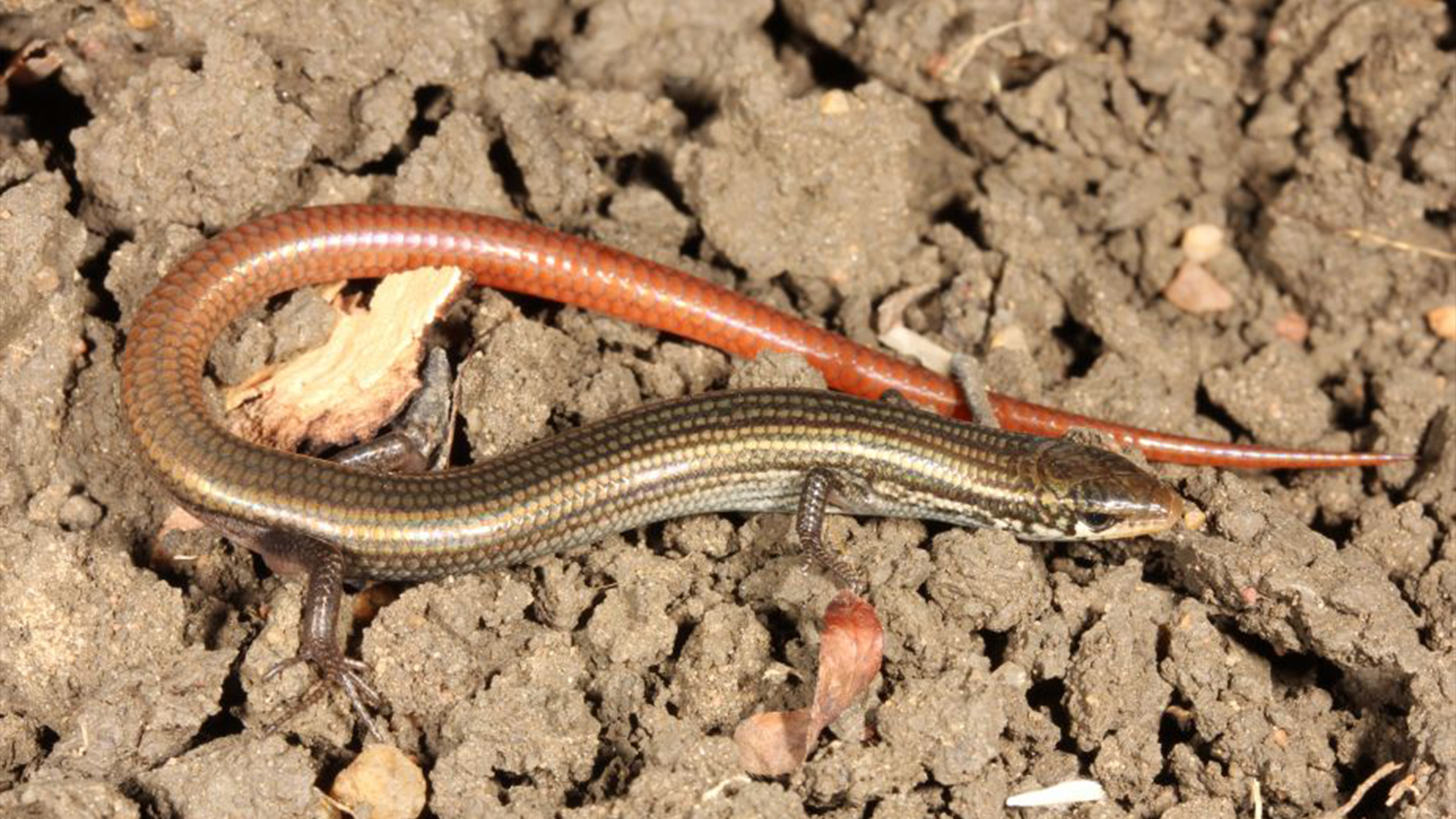
Researchers in Australia have rediscovered a secretive lizard with tiny legs that they thought may be extinct after it evaded detection for more than 40 years.
A team from the Queensland Museum and James Cook University spotted Lyon's grassland striped skinks (Austroablepharus barrylyoni) — which haven't been seen since 1981 — at several sites near Mount Surprise in northeastern Australia, according to a statement.
The researchers also saw two other threatened lizards: Mount Surprise sliders (Lerista storri) and limbless fine-lined sliders (Lerista ameles). All three species are members of the skink family, known for their snake-like features and tiny, sometimes non-existent, limbs.
"It was an exciting moment to find all three skinks, but to find the Lyon's grassland striped skink was an amazing discovery," expedition leader Andrew Amey, the collection manager of amphibians and reptiles, herpetology at Queensland Museum, said in the statement.
Related: Earless monitor lizards: The 'Holy Grail' of reptiles that looks like a mini dragon
Lyon's grassland striped skinks are very small, measuring just 2 inches (5 centimeters) long from the tips of their snouts to the base of their bright-orange tails, according to a report by the Australian government. Little is known about the highly elusive species, but they probably hunt insects in long grass and seek shelter from the sun and predators in soil cracks.
Mount Surprise sliders have small stumps as their back legs, while limbless fine-lined sliders don't have any legs at all. The sliders' reduced limbs enable them to "essentially swim through the soil," Amey said.
All three lizards have tiny distributions in the Mount Surprise area, which means they are particularly vulnerable to disturbances such as bushfires, droughts and disease. Having found these creatures still exist, the researchers want to learn more about the skink populations to help protect them, according to the statement.
"We need to know if these skinks have healthy populations or if they are declining," Amey said. "We can't take effective action to protect them if we don’t know where they occur and what threats are impacting them," he added.
"The only way to get this information is go and look for them."







